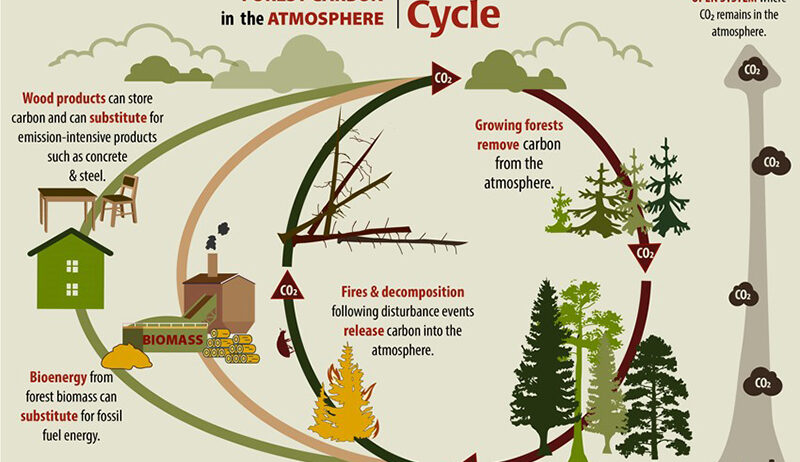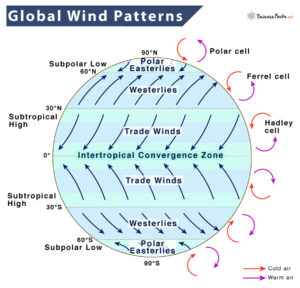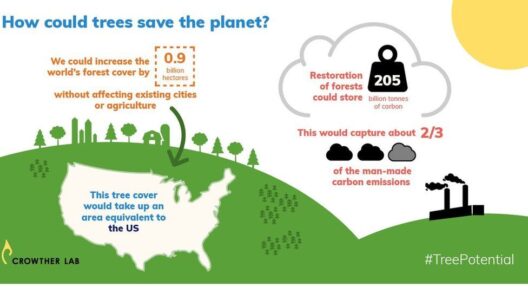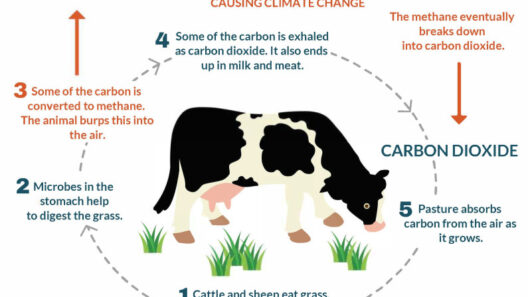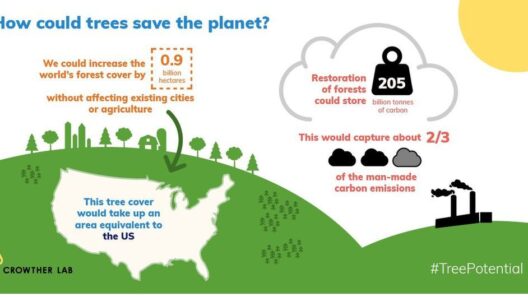Climate change has emerged as one of the most pressing challenges of our era, engendering a myriad of adverse effects on global ecosystems and human health. However, the natural world provides powerful allies in this fight—trees. Through a multitude of mechanisms, trees play a pivotal role in mitigating climate change, one leaf at a time. This article delves into the myriad ways trees combat climate change, exploring their carbon sequestration capabilities, the intricate processes of transpiration, and their importance in sustaining biodiversity.
To understand the role trees play in combating climate change, one must first grasp the concept of carbon sequestration. Trees absorb carbon dioxide (CO2) from the atmosphere during photosynthesis, a process wherein they convert sunlight, CO2, and water into glucose and oxygen. The carbon absorbed is then stored in the form of biomass—roots, stems, branches, and leaves. A mature tree can absorb up to 48 pounds of CO2 annually. This biological function is integral to mitigating the greenhouse effect, as CO2 is one of the primary greenhouse gases responsible for global warming.
Moreover, different tree species exhibit diverse abilities to sequester carbon. For example, redwoods and sequoias, known for their towering heights and extensive lifespans, can store substantial amounts of carbon—more than any other species on Earth. Meanwhile, faster-growing species, such as poplars and willows, although short-lived, also contribute to carbon capture during their lifecycle. Understanding the carbon sequestration capabilities of various trees allows conservationists and urban planners to make informed decisions about afforestation and reforestation efforts.
In addition to carbon sequestration, trees play a key role in the water cycle through the process of transpiration. Transpiration is the movement of water from the soil into the atmosphere via plant processes. As trees absorb water through their roots, a significant portion of this moisture is released into the air through small pores in their leaves called stomata. This release of water vapor not only contributes to local humidity levels but also influences cloud formation and precipitation patterns. By maintaining these hydrological cycles, trees help to regulate climate by moderating temperature extremes and sustaining local ecosystems.
Urban areas can particularly benefit from trees’ role in the water cycle. Cities, often characterized by their concrete landscapes, suffer from what is known as the urban heat island effect, where temperatures significantly rise due to human activity and built environments. Trees provide shade, reduce ambient temperatures, and ultimately help to lower energy consumption for cooling. Studies have shown that strategically planted trees can reduce summer temperatures by up to 10°F in urban areas, demonstrating their capacity to combat climate change even in densely populated environments.
Another critical facet of trees in addressing climate change is their contribution to biodiversity. Forests serve as habitats for countless species of flora and fauna. The rich biodiversity within these ecosystems is essential for maintaining resilience against climate change. Healthy, functioning ecosystems can adapt to changing conditions, while biodiversity assures that essential services—such as pollination, nutrient cycling, and pest control—remain intact. Forests act as sanctuaries, enabling species to thrive and evolve in harmony with their environment. By conserving and expanding forested areas, we foster biodiversity, ensuring the resilience and stability of ecosystems vital for combating climate change.
Moreover, trees influence soil health, which is often an overlooked aspect of climate change mitigation. The root systems of trees improve soil structure, enhancing its ability to store water and nutrients. Additionally, decaying leaves and organic matter enrich the soil with carbon, further sequestering greenhouse gases. Healthy soils not only support plant growth but also act as significant carbon sinks. According to estimates, soil contains three times more carbon than the atmosphere. Thus, trees indirectly bolster the capacity of soils to sequester carbon, fostering a more robust ecosystem.
Community engagement is also crucial in enhancing the role of trees in climate change mitigation. Educational programs that promote tree planting initiatives can galvanize local populations to actively participate in environmental stewardship. Urban greening projects, community forests, and agroforestry practices allow individuals and families to contribute to the restoration of ecosystems. Furthermore, raising awareness of the benefits of trees extends beyond just individual actions; it fosters a collective responsibility towards safeguarding our planet. By nurturing a culture that values afforestation and sustainable land use, communities can mobilize resources and advocate for policies that prioritize the preservation of trees.
Innovative approaches are emerging worldwide as land management practices evolve, incorporating the importance of trees in future climate mitigation strategies. Agroforestry, for example, integrates trees and shrubs into agricultural landscapes, allowing for enhanced productivity while maintaining ecological balance. This symbiotic relationship aids in conserving water, reducing soil erosion, and increasing biodiversity. Initiatives leveraging technology, such as drone reforestation and precision forestry, also offer promising avenues for restoring degraded lands and improving forest health.
In conclusion, trees are indispensable allies in the fight against climate change. Their capacity for carbon sequestration, influence on hydrological cycles, importance for biodiversity, enhancement of soil health, and potential for community engagement all contribute to their critical role in mitigating climate change—one leaf at a time. As we collectively recognize the multifaceted benefits of trees, it becomes increasingly imperative to prioritize their conservation and restoration. By doing so, we ensure a sustainable future not just for ourselves but for generations yet to come.



